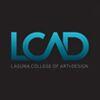Rochester Institute of Technology (RIT) was the first university to publish to the Xbox One platform. RIT also houses the B. Thomas Golisano College of Computing and Information Sciences (GCCIS)—home to the School of Interactive Games & Media (IGM). Within the school are several paths to study game design. Options include BS and MS degrees in Game Design and Development (GDD), an accelerated BS/MS that takes five years to complete, and minors in Game Design and GDD.
The College of Art and Design at RIT houses the School of Design, which has an additional option for students interested in studying games. The 3D Digital Design BFA is a STEM designated program that provides both Game Arts and 3D Visualization specializations. Consisting of 120 credit hours, bot options allow students to study games. Course examples include Game Design & Development I and II; IGM Production Studio; Layers and Effects; Scripting; Game Development and Algorithmic Problem Solving; Modeling and Motion Strategies; Contemporary Practices: Environment Design; Character Design and Rigging; Simulating Natural Phenomena; Technology in Game Arts; and Game Arts Seminar.
Graduates of this program are prepared to pursue titles such as Game Designer, CG Artist, AR/VR Designer, Visualization Artist, Game Developer, Level Designer, Special Effects Artist, Environment Designer, Lighting Technical Director, Rigger, Character Designer, and Digital Asset Designer. Program alumni have been hired by major studios such as Insomniac Games and Sony Interactive Entertainment.
Students in both the RIT School of Design and the School of Interactive Games & Media benefit from seminars, lectures, discussions, and demos by industry professionals; game development and research studios; independent study; access to the Digital Games Hub, which provides mentoring and resources for students and independent developers to create new games, launch start-ups, and enter the games industry; and Creative Industry Days.
Creative Industry Days is a series of events that allow students to network with major companies and studios, and participate in panels and portfolio reviews. Examples of past companies include Walt Disney, Epic Games, NetherRealm Studios, Adobe, Iron Galaxy Studios, Ogilvy, DraftKings, Enduring Games, CGI Digital, MahiGaming, and Zash Global Media & Entertainment.
RIT IGM Game Design and Development students also have the opportunity to develop and commodify their own games at RIT’s MAGIC Spell Studios. In addition, students have the rare opportunity to complete two paid blocks of cooperative education. This allows them to gain valuable experience in the games industry through full-time employment at a studio. Epic Games, Electronic Arts (EA), Sony Interactive Entertainment, Microsoft, Cartoon Network, and Google are examples of recent co-op companies.
The Game Design and GDD minors at Rochester Institute of Technology are require 15 credit hours. Students in both options will complete Game Design & Development I and II. Other course examples include New Media Interactive Design and Algorithmic Problem Solving I and II; 2D Animation and Asset Production; Data Structures for Games & Simulations I and II; and Interactive Media Development.
The Game Design and Development degree programs at RIT GCCIS explore game design and development, animation, interactive media, modeling, user interaction, math, and science. The BS consists of 121 credit hours, the MS requires 33 credits, and the BS/MS is 145 total credit hours.
Students in the BS have opportunities to specialize in areas such as narrative, engines, audio, or graphics through electives across the entire university. Course examples for the program include Interaction, Immersion, & the Media Interface; Game Design & Development I and II; Introduction to Web Technology for Game Developers; and Data Structures & Algorithms for Games & Simulation I and II.
RIT GDD BS students have the opportunity to complete approximately 40 credit hours of open, advanced, and general education electives throughout the program. Examples of advanced electives include Casual Game Development; Geographic Visualization; Digital Video for the Web; Games for Change; Maps, Mapping and Geospatial Technologies; and International Game Industry.
Graduates are prepared to work in a variety of industries such as entertainment industry, aerospace, internet and software, defense, media and publishing, computer hardware, and health care.
The Game Design and Development MS is a cohort-based program designed for students seeking careers in the games industry, visualization, simulation, or edutainment. Course examples include Game Development Process; Gameplay and Prototyping; Colloquium in Game Design and Development; Game Design; and Game Industry Themes and Perspectives. Advanced electives allow students to develop additional skills in a variety of areas.
Elective examples include Artificial Intelligence for Gameplay; Game Graphics Programming; Game Design and Development for Casual and Mobile Platforms; Console Development; Applied Perception in Graphics and Visualization; IGM Production Studio; and Board and Card Game Design and Development.
The MS program culminates with the group Design and Development Capstone completed across two courses. Graduates are prepared to pursue titles such as Game Developer, Software Engineer, Full Stack UI Developer, Game Designer, Associate Engine/Graphics Automation Engineer, Junior C++ Developer, and Systems Design Engineer.
Rochester Institute of Technology was founded in 1829 as the Rochester Athenaeum. With global campuses in China, Croatia, Dubai, and Kosovo, this research university serves more than 20,000 students, making it one of the largest private universities in the U.S. RIT provides 200+ academic programs across 10 colleges and institutes, and the School of Individualized Study. Rochester Institute of Technology is accredited by the Middle States Commission on Higher Education (MSCHE).



























